27. Mar 2019 - DOI 10.25626/0096
Heiko Pääbo, PhD is a lecturer at the Johan Skytte Institute of Political Studies, University of Tartu where he also coordinates a multilateral joint Master's Program "Central and Eastern European, Russian and Eurasian Studies." His research and teaching focuses on history textbooks, memory studies as well as on Baltic Sea region politics.
Dr. Eva-Clarita Pettai is a research associate at the Imre Kertesz Kolleg, University of Jena as well as managing editor of the Cultures of History Forum. She has published widely on the politics of memory and transitional justice in the three Baltic states after 1991. Her current research focusses on legal frames of memory as well as on changing narratives of 1989 in Central and Eastern Europe.
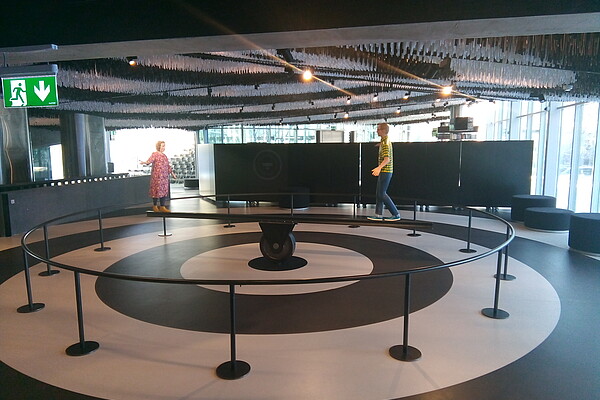
In 2018, Estonia celebrated the centenary of its statehood with a series of events, including new films, public parades, a youth song and dance festival and numerous speeches and official acts of commemoration. Among the latter was the unveiling of a Memorial to the Victims of Communism, a monumental structure located at the outskirts of Tallinn, in late summer 2018. It stood as a reminder of the reality that Estonia had, in fact, been independent for only about half of that century.
Since 2003, the Museum of Occupations in Tallinn has dedicated itself to preserving the memory of this other half-century of foreign rule. Founded on the private initiative of émigré Estonian Olga Kistler-Ritso and her family foundation, the museum’s management had always maintained a close relationship with the Estonian political establishment.[1] For fifteen years, the museum was a place where mostly foreign visitors went to learn about the social traumas that Estonians endured during three successive occupations, first by the Soviet Union, then the Nazis, and then again by the USSR after the Second World War.[2]
In 2015, the Museum’s management changed. The old generation of dissidents who had previously steered the museum’s course was replaced by a new post-Soviet generation. The new management’s aim was to re-name the museum, to modernise it and to revamp its outdated permanent exhibition in order to attract more Estonians – and especially more young people. It only seemed logical that the revamped museum would also re-open during the centenary year of 2018. On 12 July 2018, the permanent exhibition “Freedom without Borders” opened after only six months of restructuring.
Long before the re-conceptualization of the permanent exhibition began, the Museum’s plan to re-name itself ‘Museum of Freedom’ (Vabaduse Muuseum), abbreviated ‘Vabamu’, stirred much controversy. An opinion poll in the summer of 2016 showed that over half of the respondents were against the name change.[3] Critique came in particular from representatives of victim organisations who saw the re-naming as a disavowal of their memories. They also complained that they had not been involved in the decision-making process. The Estonian Association of Illegally Repressed Persons MEMENTO claimed that the younger generation, who had no direct experience of the Soviet occupation, did not have the right to decide how it should be memorialised. MEMENTO felt that the victims’ suffering was being exploited to earn money; former dissidents worried that the new museum would neglect its original aim – to commemorate the suffering of Estonians under the (Soviet) terror regime(s).
Some conservatives, moreover, connected the museum’s name change to the ongoing Estonian-Russian memory battles, arguing that removing ‘occupation’ from the museum’s name was an act of self-censorship that played into the hands of the current Russian government, which openly questions the fact of the occupation.[4] The then-director of the museum, Merilin Piipuu, tried to dispel these concerns by referencing former president Lennart Meri, who in 2003 stated that the experience of occupation gave meaning to our freedom today. She assured critics that the experience of occupation – and related notions of resistance, restoration and freedom – would all remain “at the heart of the museum.”[5]
The public debate continued for over a year and finally resulted in a compromise to rename the museum ‘Museum of Occupations and Freedom – Vabamu’. The extensive media attention that the museum received during the controversy put a great deal of pressure on the new management and its new exhibition. The opening day in July 2018 saw a large number of visitors and was widely reported on.[6]
In many ways, the dispute also reflects the broader generational change currently taking place in the Estonian memory landscape and the conflict that entails. The older generations who lived through Soviet communism fear that the new generation of curators and managers lacking any direct experience with socialist realities will not respect their suffering and experiences of deprivation. Those who have dominated the country’s memory culture over the past thirty years are thus feeling pushed aside.
The idea of freedom is an easily tangible guide post through this exhibition of Estonia’s most difficult past. Central to understanding the exhibition is the audio-guide that every visitor receives upon arrival. Here, a male narrator provides crucial information about the exhibition in several languages and encourages the visitor to interact with individual artefacts that are on display. Given the relatively small overall exhibition space, the number of objects on display is rather limited. Most of the items are presented behind glass, and visitors learn more about them by choosing the respective image on their audio device. The narrator also repeatedly invites visitors to reflect on the meaning of freedom by pointing at different objects in the exhibition.
The exhibition actively works with space and lighting in order to evoke a sense of freedom, or the lack thereof. At first, visitors are guided down a staircase that leads to the basement. Here, they go through a dimly lit, labyrinth-like arrangement of exhibition walls and installations to learn about the Soviet and Nazi occupations of Estonia. There are four distinct sections that follow no clear chronological sequence: the section on “Inhumanity” includes stories of Stalin-era deportations and life in the Gulag, as well as of Nazi-era mass atrocities against Jews; “Exile” addresses the forced migration of many Estonians from their homes and their lives in Western exile; “Soviet Estonia” again covers both the Nazi and Soviet occupation regimes. A more general introduction to the main features of both the Stalinist and Nazi regimes is followed by displays addressing acts of collaboration, post-war armed resistance during the Stalinist era as well as a separate exhibit on everyday life in the late Soviet periods. The final two sections of the exhibition are entitled “Recovery,” covering the restoration of Estonia’s independence (1987-1991), and “Freedom” – about contemporary free Estonia. Both are located on the ground floor where visitors arrive by means of a bright orange elevator. Although this arrangement may have been necessitated by spatial limitations, the elevator trip also provides a conceptual message: we leave the dark past behind and elevate ourselves to free Estonia.
The section about the restoration of independence is located on the balcony and brightly lit. It still maintains elements of a labyrinth, albeit with a clear direction to its destination. The audio-guide goes silent at this point, informing visitors that “in a free society people speak for themselves.” Having followed the path of various personal stories of the Singing Revolution on display, visitors arrive at the lower-level ground floor to an opening: the room of freedom. It is the most spacious room of the exhibition with a window wall that seems to extend the space further into the city. A large modern art installation catches the visitor’s attention: a seesaw with figures standing at each end carefully balancing symbolizes the balancing act between freedom and responsibility. Here is, indeed, the only place in the exhibition where the concept of freedom is a bit more critically reflected on: a large blackboard invites visitors to once again consider the meaning of freedom with question like “Which freedoms are we ready to fight for? When are we ready to agree on restrictions? When is it too early to act? When is it too late?”
The previous iteration of the Museum of Occupations had long been criticized by scholars for reproducing simplified and ideologized historical narratives instead providing a space for learning and critical reflection.[7] In the Estonian general public, but also in academic historical discourses, the Nazi-German and Soviet occupations are often referred to as equally evil totalitarian regimes. In collective memory, the fifty years of Soviet rule, and especially the early years of Stalinist mass terror and colonization, are seen as having left deeper scars in the social fabric of the nation than the relatively short Nazi-German occupation. Such perceptions were also reflected in the museum’s previous exhibition, which narrated the story of changing occupations through a strong nationalist prism, largely ignoring the fate and experiences of other ethnic groups during that period and downplaying the collaboration of some Estonians with changing occupation authorities.[8]
The new exhibition clearly wished to break with this deeply ethnocentric and collectivist perspective by taking a consistently individual approach. This allows the narrative to appear more inclusive toward different social groups and to avoid presenting Estonians as some sort of homogenous actor of history.
Visitors receive a first glimpse of this approach right before entering the actual exhibition: four large screens display videos of three octogenarian and older women and a man, sitting calmly in front of the camera. Each of them, we learn from a young man who walks from one screen to the next, experienced the period of the Second World War in a different way: one woman survived deportation to Siberia; the man survived the Holocaust in Estonia – one of only a handful of Estonian Jews; one woman was forced to flee Estonia and build a life in Western exile; the third woman lived her entire life in a little village on the island of Hiiumaa. The main message of this installation is that each of these four individuals represents a possible life-trajectory during the years of occupation, which can be further explored in the museum.
The video-installation also imparts the key to the entire exhibition which is built around individual memories and life-stories. As the audio-guide informs the visitor right at the beginning: “please do not expect very many facts here. Above all, it’s a tour through fragments of memory.” Indeed, historical facts, dates and numbers fade into the background as the exhibition talks about individuals who lived through – and often died – under two inhumane regimes. It is also about human interactions that defy easy categorizations. One survivor’s story, for example, mentions the kind people of Siberia who helped those forced into exile. Another story is about local people who were executed at the hands of their fellow countrymen serving the regime.
Moving on to the narrow section about the Holocaust in Estonia, visitors find a relative lack of personal objects and stories compared to the Gulag section. Instead, they learn about a little girl named Daisy, who had lived with her mother in Pärnu and was murdered right there in 1941. The relative dearth of objects and pictures in this section can be in part explained by the small number of Jewish-Estonian survivors whose stories can be told. Indeed, most of Estonian Jews who had remained in Estonia by the summer of 1941, were murdered during the first months of German occupation.[9] Since the Holocaust was based on a racist ideology directed against ethnic minorities (Jews and Roma), this part of Estonia’s occupation history is presented in clearly ethnic terms, thereby diverting somewhat from the rest of the exhibition. Still, the curator of the section clearly made an effort to combine the results of scholarly research on Nazi crimes in Estonia with a few individual memories collected from letters and fragments that survived the War. Here, more than elsewhere, visitors are dependent on the audio-guide, which provides basic information about what happened and who was involved. Again, the narrative does not seek to explain, but instead merely notes that people made choices – to collaborate in Nazi crimes, to stay silent or to help their Jewish neighbours.
In the next section of the exhibition, visitors learn about those Estonians who fled into Western exile. A simple wooden rowing boat is placed in the middle of the room above a floor whose surface has been made to look like water to symbolize the often-dangerous routes people were forced to take in order to escape Soviet occupation. The narrator states that this is actually an original used by a group of Estonian intellectuals to cross the Baltic Sea to Sweden. It divides the “Exile” room into two parts: one, telling the story of forced migration, most prominently depicted in an original video on a big screen behind the boat; the other, showing an already settled émigré community and their actions to maintain Estonian culture.
Again, there is a clear ethnic dimension to the narrative of forced exile and émigré life as the identities of the émigrés are defined by their ethnicity. A few objects presented in glass vitrines describe the efforts to maintain the true ‘Estonianness’ of pre-war times throughout the Cold War period. However, the curator deconstructs the impression of a homogenous ethnic community by presenting memories both of people who maintained a strong Estonian identity as well as of those who fully assimilated and lost any emotional attachment to their former homeland. Their stories are told by the audio-guide and through family pictures, films and small items. The exhibition does not applaud one choice over another, but rather highlights the different circumstances and decisions made by individuals forced to flee their homeland involuntarily and settle in another culture. Moreover, it also tells stories of reunions and restored relations between émigré Estonians and ‘Home Estonians’ (kodu eestlane). Originating from the late Soviet period, the stories presented often focus on the material dimension of these restored relations – items brought or sent by relatives from the West, once it became possible again to do so. Continuing its dialectic approach, the exhibition also addresses the distance between émigré Estonians and those who remained in Estonia due to their very different living conditions.
Leaving the “Exile” section, the visitor enters a room with a distinctly different design: “Soviet Estonia”. Having until this point focussed mostly individual stories, the exhibition suddenly pivots in this room to present the two totalitarian regimes and how they worked through propaganda and ideology, violence and coercion. A key criticism of the previous exhibition concerned the undifferentiated way in which the Nazi and Soviet regimes were presented and, indeed, how “the Nazi period [was used] to show that Soviet crimes in Estonia were worse.”[10] While still showcasing both totalitarian regimes in parallel, the new exhibition avoids this trap by pursuing a “multidirectional” approach, as it has been termed in the academic literature. By deliberately using iconographic elements from both Holocaust and Gulag memories (such as the cattle wagon or suitcases) it encourages empathy for the human suffering experienced under both regimes. Whether or not this really works is up for debate. Fact is that the curator of this section was not quite successful in his effort to avoid prioritizing one totalitarian regime over the other. While the interactive displays present both regimes in equal measure, keeping a neutral tone, the design of the room speaks a different language: the displays are built into a table that has the shape of a five-pointed star and the ceiling above is covered by an oversized Stalin portrait.
Apart from these rather awkward design choices, this section of the exhibition continues to take pains to show that understanding the historical realities of life under changing totalitarian regimes requires more than ethnic or national categories. Thus, where the previous exhibition often glossed over the issue of regime collaboration or compliance, since it did not fit the narrative of national victimhood, the current exhibit openly addresses the multiple ways in which individuals reacted to totalitarian rule. The audio-guide tells the stories of Estonians who participated both in Nazi and in Soviet crimes; it also introduces the visitor to individuals who participated in anti-Soviet resistance. The aim behind this is clearly to contribute towards a more complex narrative of the occupations and to show that ethnicity is not a decisive factor in the choices that people made.
Nonetheless, the effort to circumvent the issue of nationality in Soviet Estonia at all costs eventually leaves the visitor rather puzzled – especially in the later part of the ‘Soviet Estonia’ section where one learns about everyday life under late socialism. Presented with pictures of Brezhnev-era architecture and the charm of a Soviet-style kitchen and other everyday items, the visitor cannot help but miss basic information about basic demographic shifts that took place during this period: the massive influx of mostly Russian-speaking Soviet citizens into the Estonian SSR – a permanent matter of concern for Estonians throughout the period of Soviet rule. How did newly settled Russian-speakers experience life in Soviet Estonia? The visitor learns nothing about it in this section.
Indeed, Russian-speaking inhabitants of Estonia emerge only in the next section, on Estonia’s “Recovery”. The curator of this section manages to overcome narratives of the ‘Singing Revolution’ that present ‘the Estonians’ as finally breaking free from Russian dominance and Soviet-era settlers as merely an undesired legacy or remnant of the Soviet occupation. Instead, the personal memories of local Russian-speakers are presented as part of the overall story of the struggle for independence. Once again, visitors are left to make up their own mind as they encounter various activists from the period, who, in short video clips, tell their stories and relay their experiences and intentions during this turbulent period. Among them are a former punk and feminist activist, a businessman, a national activist, an environmentalist, as well as two Russian-speaking inhabitants of Narva, one of them a former leader of the 1993 Narva and Sillamäe autonomy referendum.[11]
With this altogether more inclusive approach to Estonia’s history of regime change, the exhibition continues to encourage its visitors to leave narrow nationalist categories of us versus them behind and to accept the plurality of voices and actions that existed during the transition. This tactic is sustained into the very last ‘room of freedom’ were visitors can listen to video-recordings by ordinary Estonians, some well-known, some less so, explaining what freedom means to them. The selection of individuals hints at the curators’ desire to present different social groups and backgrounds: individuals from different generations, ethnic backgrounds, religious affiliations and with different political views are all included. What they have to say is not a glorification of freedom, but rather an honest reflection about what the word means to them personally and how it applies to contemporary Estonia.
The multiplicity of voices and characters presented throughout the exhibition, in letters, photos, films and video-interviews underline the exhibition’s key aim to present multiple perspectives and to encourage reflection. As announced by the audio-guide at the beginning of the tour, the many memories and stories suggest that history is but a puzzle that consists of various memory fragments. By encountering so many different decisions made by different individuals at different moments in time, visitors feel constantly compelled to reflect on the reasons and motivations – as well as the consequences – of individual actions. Categories of national victimhood, heroism and collective guilt are continuously questioned for their tendency to simplify what are otherwise rather more complex processes of individual decision-making and social interaction under extreme and difficult circumstances.
Walking through the different sections, the audio-guide is continually interacting with the visitor. Stories and memories are often followed up with reflective questions, like “How would you behave?” and “What decision would you take?” By pointing out that acts of collaboration, criminal behaviour, spying and informing on others were carried out “by ordinary people like you and me”, the audio-guide deliberately puts the visitor on the spot. Moreover, it conveys a clear message about the fragility of notions such as freedom and humanity. On the one hand, this approach allows the curators to present the totalitarian past not as an abstract structure of evil, but as a system that was only made possible with the participation of ordinary people. On the other hand, it clearly aims to project a message into the future by alerting visitors to the reality that no one is safe from ending up in situations where freedom no longer exists and were complicated, often impossible decisions must be taken.
This reflexive approach becomes particularly evident in the section on the anti-Soviet armed resistance, strangely represented in the form of a narrow pathway through wooden tree-like structures, lined with mirrors on both sides. The armed resistance of the immediate post-war years has been subject to much ideological distortion. Building on current academic research, the exhibition aims to overcome the over-simplified images and narratives of both Soviet propaganda and post-Soviet nationalism. The audio-guide narrator introduces individuals who hid in the forest and committed acts of sabotage against the Soviet military among other targets and were often betrayed by their own companions or by moles within their units. At the same time, he also mentions the atrocities that partisan units committed against local civilians, either out of ideological considerations or for other reasons – some very material. Visitors are asked to imagine how it must have initially felt to go enthusiastically into the woods in order to fight for freedom and to remain loyal to the cause despite the set-backs and acts of betrayal.
The arguably most powerful and intriguing tool used to encourage reflection in the context of Soviet Estonia are two interactive displays that invite visitors to face the dilemmas of real people during that period. On a screen, the visitor is asked to pick a person’s name. This choice leads to a description of a particular moment in that person’s life, usually an encounter with the repressive state apparatus, which required a decision. Three options are given for what to do. Once the visitor makes a decision, the screen describes what the real historical person decided and what the consequences of this choice were. The interaction with the display creates a chilling feeling in response to the sometimes heart-breaking decisions people were forced to make when confronted with a ruthless and repressive regime.
A similar way of interacting with and engaging the visitor continues into the later section, on Estonia’s re-gaining of independence. Here, we find several interactive screens that invite visitors to engage with issues that arose during the process of breaking away from the Soviet Union including the constitutional design of a free democratic Estonia. Designed to resemble the rather popular quizzes on personal views that circulate on social media, these interactive tools serve to convey information about important historical discussions that took place between 1987 and 1993. Their game-like character is also clearly aimed at a younger audience and can function as an important tool of civic education.
With the changing of its name and the radical re-conceptualization of its main exhibition, the museum has clearly departed from previous practices for presenting Estonia’s history of occupation and is breaking new ground in terms of civic education at the museum. Considering the loud protests and initial controversy triggered by the plans for the revamped museum, the actual realization of those plans caused no further debate. Existing grievances were likely dissolved by the compromise surrounding the museum’s name, and the curators’ success in maintaining the museum’s original purpose as a place of remembrance, while avoiding a simplified victim-perpetrator narrative and stressing the often ambiguous and murky processes of individual decision-making. Still, the almost complete lack of reviews in the media and the fact that the prestigious Ministry of Culture price for the best permanent exhibition in 2018 went to the Estonian History Museum can be interpreted as a wilful disregard of this new way of telling Estonia’s occupation history.
The silence of Estonia’s political and cultural elites, however, did not prevent people from visiting the new museum en masse. According to information put out by the museum, the number of visitors was four times higher in 2018 than in 2015 and the proportion of local visitors (from inside Estonia) has increased even more markedly. While this sudden increase may have been a result of the controversy that preceded the re-opening, it is also evidence that the new exhibition has succeeded in achieving one of its main goals: to attract a greater number of visitors and more Estonians.
The robust technological dimension of the museum with its portable audio-guide, its touch screens and interactive displays clearly speaks to a younger, digitally-native generation of visitors. Moreover, the museum’s emphasis on the notion of freedom as a means of elucidating the history of the occupations by continuously asking what it means to lose and regain freedom certainly appeals to a generation of Estonians for whom the war and Soviet Estonia remains an abstract concept learned about in school or through anecdotes from parents and grandparents. At the same time, this very notion of freedom remains no less abstract and surprisingly little critically reflected upon in this exhibition. It will be interesting to see how much history teachers will make use of the possibility for out-of-classroom learning and of the educational tools provided.
Yet, with all its innovative technology and tools for reflection, Estonian and foreign visitors who visit the museum in order to learn about what happened and when may feel slightly confused upon leaving the museum. The lack of a clear timeline – in fact, the conscious blurring of dates and time periods especially in the basement part of the exhibition – but also the complete lack of information about some of the basic figures, dates and events in the “Recovery” section makes one wonder whether the idea to create a museum around “fragments of memory” is enough. Approaching the past through personal stories can certainly complement the more traditional history curriculum in Estonian schools. The question, however, remains whether a museum such as Vabamu, which is still mostly visited by foreigners, can expect the degree of prior historical knowledge that this exhibition requires.
Heiko Pääbo and Eva-Clarita Pettai: A Museum of Memories: The New ‘Vabamu’ in Tallinn. In: Cultures of History Forum (27.03.2019), DOI: 10.25626/0096
Copyright (c) 2019 by Imre Kertész Kolleg, all rights reserved. This work may be copied and redistributed for non-commercial, educational purposes, if permission is granted by the copyright holders. For permission please contact the editors.
The official website of the Museum of Occupations and Freedom - Vabamu
Related article in the Cultures of History Forum (25 April 2017)

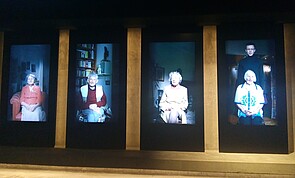
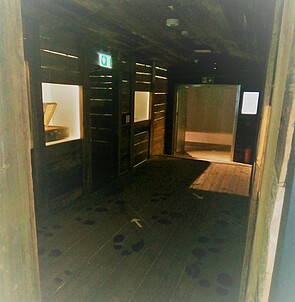
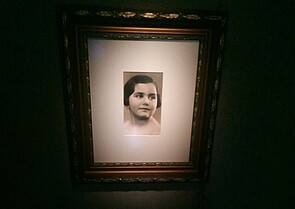
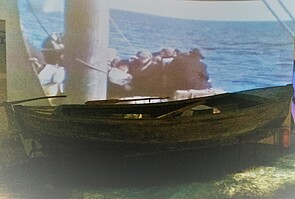


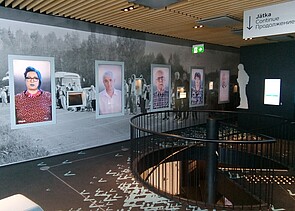
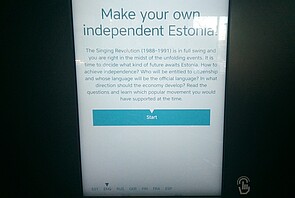
Kara Brown · 05.07.2018
Layered Spaces of Meaning: The Estonian National Museum
Read more
Lorraine Weekes · 25.04.2017
Debating Vabamu: Changing names and narratives at Estonia’s Museum of Occupations
Read more
Heiko Pääbo · 25.10.2015
"1944" vs. 9 May – An Attempt at Reconciliation Instead of Vigorous Glorification: Estonia Commemora...
Read more
Maria Mälksoo · 30.04.2014
Estonia - The Ukrainian Crisis as Reflected in the Estonian Media
Read more
Get this article as PDF download (including pictures).